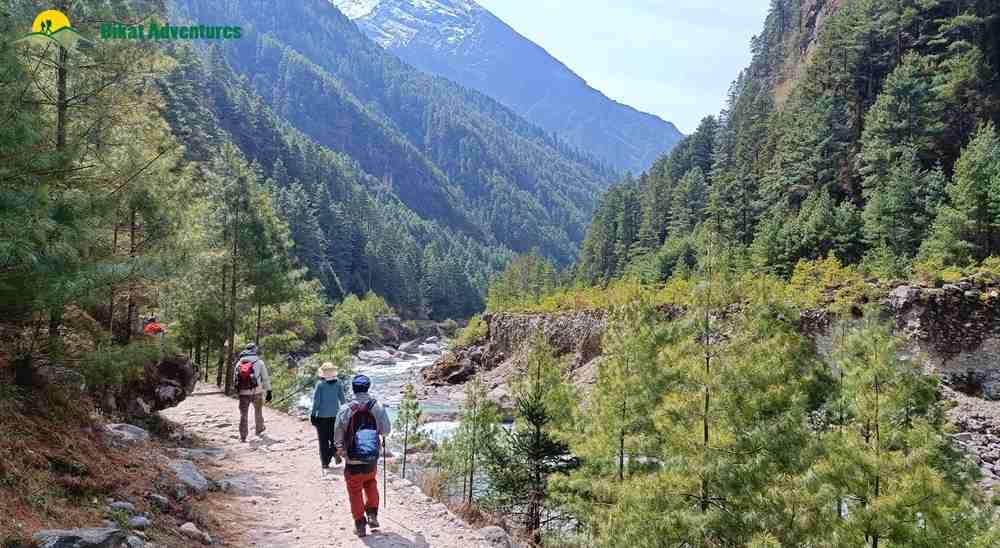The Everest Base Camp Trek epitomizes more than a mere mountain ascent; it’s a profound journey into the heart of the Himalayas, blending natural splendor with personal triumphs. For countless adventurers, including myself, the decision to embark on this iconic trek is fueled by an innate yearning to explore, push boundaries, and immerse in the majesty of the world’s highest peaks.
The allure of the Everest Base Camp isn’t solely about conquering Everest’s foothills; it’s about embracing challenges, embracing breathtaking vistas, and diving into the rich cultural tapestry woven across the Himalayas. Standing amidst these towering giants, witnessing the sunrise paint the peaks in golden hues signifies more than a summit; it marks a transformative experience, a quest for self-discovery amidst nature’s grandeur.
In this guide, we aim to share insights, tips, and first-hand experiences from preparing for the Everest Base Camp Trek. Let’s delve into the practicalities, physical and mental preparations, cultural insights, and much more, empowering aspiring trekkers with the knowledge and confidence needed to conquer this exhilarating adventure.
So, fasten your boots, pack your determination, and join me on this enlightening journey to prepare for the Trek, where the mountains beckon and the soul finds its summit.
Understanding the Mount Everest Base Camp Trek
The Everest Base Camp Trek is a legendary journey that takes adventurers through breathtaking landscapes and significant landmarks in the Himalayas. This challenging yet rewarding trek starts in Lukla and winds up through Sherpa villages, high-altitude trails, and stunning vistas before reaching the iconic Everest Base Camp. The route typically spans a round trip of around 130 kilometers, leading trekkers through various terrains and elevations. It navigates through Sagarmatha National Park, a UNESCO World Heritage Site renowned for its unique biodiversity and dramatic mountain scenery.
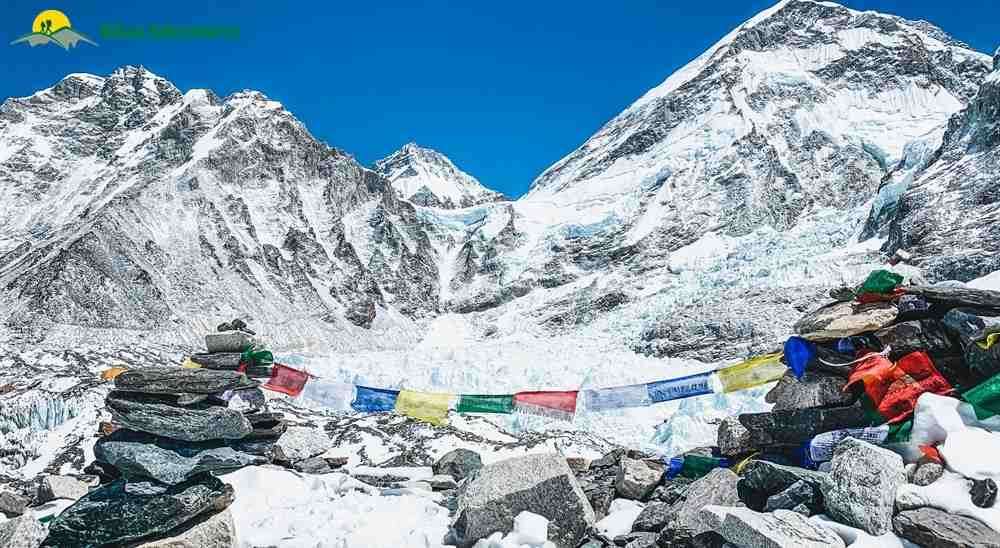
Key highlights along the trek include Namche Bazaar, a vibrant Sherpa town serving as an essential trading hub and acclimatization stop. The trail continues through Tengboche Monastery, offering stunning views of Everest and a glimpse into Sherpa culture and traditions. As trekkers ascend, they encounter scenic viewpoints like Kala Patthar, providing panoramic views of Everest, Lhotse, Nuptse, and other surrounding peaks.
The trek culminates at Everest Base Camp, where climbers prepare to ascend the world’s highest mountain, affording trekkers a close-up view of the majestic Everest. Trekkers experience diverse landscapes throughout the journey, from lush forests and glacial rivers to rugged terrain and icy paths. The trek is not only a physical challenge but also an opportunity to immerse oneself in the unique culture, traditions, and hospitality of the Sherpa people.
The Everest Base Camp Trek is a bucket-list adventure, offering a profound sense of achievement and unforgettable memories amidst the world’s most awe-inspiring mountain scenery.
Bikat Adventures’ Everest Base Camp Trek
For trekkers seeking guidance, support, and an unparalleled Everest Base Camp adventure, Bikat Adventures‘ comprehensive services and expert guidance pave the way for an unforgettable expedition. Join forces with Bikat Adventures on this transformative odyssey where the Himalayas beckon and your soul finds its summit.
Bikat Adventures offers meticulously planned Everest Base Camp treks, ensuring safety and enriching experiences. Their expertly curated itineraries, seasoned guides, and responsible trekking practices cater to all levels of adventurers. Beyond physical conquest, Bikat fosters transformative journeys and cultural immersion with a commitment to top-tier safety standards. To learn more about Bikat Adventures, click here!
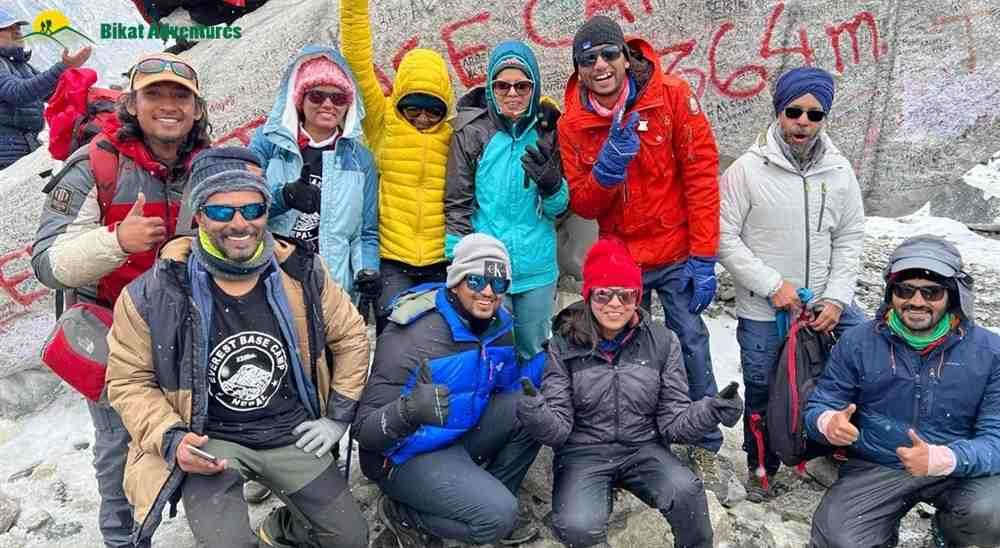
Physical Preparation for the Everest Base Camp Trek
Preparing physically for the Everest Base Camp Trek is crucial as it involves trekking at high altitudes and varied terrain. Here are some fitness requirements, training guidelines, and recommended exercises to consider:
1. Fitness Requirements:
- Cardiovascular Endurance: Build endurance for sustained walking for several hours a day.
- Strength and Muscular Endurance: Strengthen leg muscles, core, and upper body for stability and support during the trek.
- Altitude Acclimatisation: Train to adapt to lower oxygen levels by gradually increasing altitude exposure during training.
2. Training Regimen:
- Cardiovascular Training: Regular aerobic exercises like walking, hiking, running, or cycling to improve stamina and endurance.
- Strength Training: Focus on leg muscles (quadriceps, hamstrings, calves), core muscles, and upper body strength (shoulders, arms, back) using resistance exercises like squats, lunges, planks, push-ups, and pull-ups.
- Altitude Simulation: Incorporate altitude simulation training using altitude masks or training at higher elevations to acclimate your body.
3. Recommended Exercises:
- Walking/Hiking: Regularly include uphill and downhill hikes, gradually increasing distance and elevation to simulate trek conditions.
- Cardio Workouts: Running, cycling, or using elliptical machines to improve cardiovascular fitness.
- Strength Training: Bodyweight exercises, weightlifting, or resistance band workouts to strengthen muscles and improve overall body strength.
- Core Exercises: Planks, crunches, and yoga pose to enhance core stability and balance.
- Flexibility Training: Stretching exercises or yoga to improve flexibility and prevent muscle strain.
It’s essential to start training well in advance (at least 3-6 months before the trek) and progressively increase the intensity and duration of workouts. Additionally, consult a healthcare professional or a fitness trainer before beginning any new exercise regimen, especially if you have any pre-existing health conditions. Adequate preparation and training will significantly contribute to a successful and enjoyable experience.
Gear and Packing Essentials for Everest Base Camp Adventure
Here’s an essential checklist of necessary gear and equipment for the Everest Base Camp Trek, along with tips for efficient packing and minimizing weight:
Clothing:
- Moisture-wicking base layers
- Insulating layers (fleece or down jacket)
- Waterproof and windproof outer shell jacket
- Trekking pants/convertible pants
- Thermal underwear
- Woollen or synthetic socks
- Trekking boots or sturdy hiking shoes
- Gaiters (for snow or mud protection)
- Gloves and a warm hat
- Sun hat or cap
- Sunglasses with UV protection
Gear and Equipment:
- Backpack (40-50 liters) with a rain cover
- Sleeping bag suitable for low temperatures (0°F or -18°C) (in case you decide to camp)
- Trekking poles for stability and support
- Headlamp or flashlight with extra batteries
- Water purification tablets or a water filter
- Duffel bag or porter’s bag for extra gear (if using porters)
- Personal first aid kit with essential medications
- Portable charger/power bank for electronic devices
- Camera or smartphone for capturing memories.
Miscellaneous Items:
- Sunscreen (SPF 30+), lip balm with SPF, and moisturizer
- Insect repellent and hand sanitizer
- Toiletries (toothbrush, toothpaste, biodegradable soap, etc.)
- Quick-dry towel and wet wipes
- Lightweight trekking towel
- Snacks and energy bars for quick nourishment
Tips for Packing Efficiently and Minimising Weight:
- Layering: Pack lightweight, moisture-wicking clothing that can be layered for warmth and adaptability to changing weather conditions.
- Multi-purpose Items: Choose gear for multiple purposes, like a multi-tool or a buff, that can be used as a hat, neck warmer, or face mask.
- Rent or Hire Locally: Consider renting or hiring bulky gear like sleeping bags or trekking poles in Kathmandu or Lukla to reduce the weight of your luggage.
- Prioritise Essentials: Pack only essential items, avoid overpacking, and assess each item’s necessity before including it in your gear.
- Weight Distribution: Distribute weight evenly in your backpack to ensure balance and comfort during the trek.
- Test Pack: Before the trek, conduct a trial pack to assess the weight and adjust as necessary.
Remember, packing efficiently and minimizing weight will enhance your trekking experience by ensuring you carry only what’s necessary while staying prepared for the challenging conditions of the Trek.
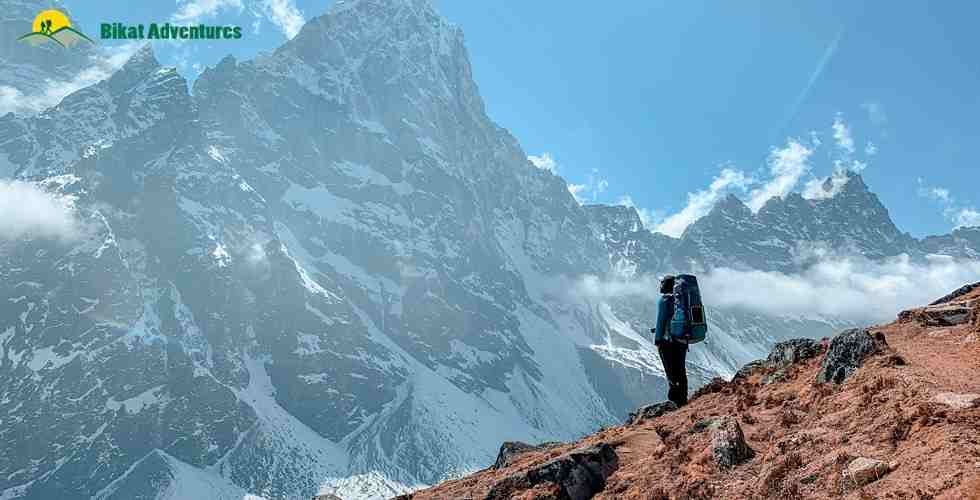
Altitude Sickness Awareness: Recognizing, Preventing, and Managing AMS on the Everest Base Camp Trek
Altitude sickness is a serious concern, and trekkers should be vigilant and informed about its symptoms and management strategies. Prioritise acclimatization, stay hydrated and be prepared to adjust the trekking schedule if necessary to ensure a safe and enjoyable experience. Here’s information about altitude sickness symptoms, prevention strategies, and management:
Understanding Altitude Sickness:
- Symptoms: Headaches, dizziness, fatigue, nausea, loss of appetite, difficulty sleeping, and shortness of breath are common signs of altitude sickness.
- Causes: Altitude sickness occurs due to reduced oxygen levels at higher elevations, which affects the body’s ability to acclimatize.
- Severity: It can range from mild AMS to more severe conditions like high-altitude pulmonary edema (HAPE) and high-altitude cerebral edema (HACE), which require immediate medical attention.
Strategies for Prevention and Management:
- Gradual Ascent: Ascend slowly, allowing time for acclimatization. Follow a well-paced trekking itinerary that includes rest days for adaptation.
- Hydration: Drink plenty of fluids (water, electrolyte solutions) to stay hydrated but avoid excessive alcohol and caffeine consumption.
- Balanced Diet: Maintain a balanced diet with carbohydrates and high-calorie foods to provide energy at higher altitudes.
- Medication: Some individuals may consider drugs like acetazolamide to prevent AMS under a doctor’s guidance.
Health and Safety Essentials for Your Everest Base Camp Trek
Prioritizing health and safety measures, including travel insurance, necessary vaccinations, and well-prepared first aid kits, ensure readiness for potential health challenges during the Trek. Being proactive and prepared significantly contributes to a safer and more enjoyable trekking experience.
Travel Insurance and Vaccinations:
- Importance of Travel Insurance: Secure comprehensive travel insurance covering high-altitude trekking, medical emergencies, and evacuation services.
- Necessary Vaccinations: Consult a healthcare professional for vaccinations against common illnesses in the region, such as hepatitis, typhoid, and tetanus.
First Aid Essentials and Emergency Preparedness:
- First Aid Kit: Carry a well-equipped kit containing bandages, antiseptic creams, pain relievers, blister treatment, and personal medications.
- Emergency Contact Information: Keep emergency contacts handy, including local authorities, your tour operator, and embassies or consulates.
- Altitude Sickness Awareness: Educate yourself and your group about altitude sickness symptoms and management strategies.
- Communication Devices: Carry communication devices like satellite phones or emergency beacons for remote areas with limited connectivity.
Accommodation and Meals During the Everest Base Camp Trek
1. Accommodation Options:
- Teahouses or Lodges: Along the trekking route, teahouses offer basic accommodation with rooms and shared facilities. They provide a cosy shelter with meals included.
- Camping: Some trekkers opt for camping, carrying their tents and equipment, though teahouses are more common and convenient.
2. Dietary Considerations and Food Choices:
- Local Cuisine: Teahouses offer a variety of local and international dishes. Dal Bhat (rice and lentils), noodles, soups, and momos (dumplings) are typical Nepali specialties.
- Hygiene Awareness: Prioritise hygiene when selecting meals. Choose cooked, hot, and freshly prepared food to minimize the risk of foodborne illnesses.
- Hydration: Drink fluids, especially at higher altitudes, to avoid dehydration. Avoid unfiltered water and opt for boiled or treated water.
3. Dietary Tips:
- Carbohydrates and Proteins: Consume energy-rich foods like rice, pasta, potatoes, and lentils for stamina and muscle recovery.
- Snacks and Supplements: Carry energy bars, nuts, and supplements to supplement nutrition during the trek.
- Acclimatization Diet: Adjust your diet gradually to the local cuisine to aid digestion and acclimatization.
Budgeting and the Everest Base Camp Trek Cost
A well-planned budget considering expected expenses, potential hidden costs, and some flexibility will help ensure financial preparedness for a successful and enjoyable experience.
Expected Expenses Breakdown:
- Permits and Fees: Include ticket costs such as the Sagarmatha National Park entry fee and TIMS (Trekkers’ Information Management System) card.
- Accommodation: Budget for nightly accommodation costs at tea houses or lodges along the trekking route.
- Meals: Estimate expenses for meals and snacks at tea houses or restaurants during the trek.
- Guides and Porters: Consider their fees, including accommodation and meals, if hiring guides or porters.
- Transportation: Account for costs related to flights, transport to and from Lukla, or other starting points.
Budgeting Tips:
- Research and Plan: Research average costs for permits, accommodation, and meals to estimate a realistic budget.
- Flexibility: Have a buffer for unexpected expenses or additional days due to unforeseen weather delays or acclimatization needs.
- Negotiation: If hiring guides or porters independently, negotiate prices and clarify services included in the fee.
- Cash Reserves: Carry extra cash in local currency (Nepalese Rupees) for emergencies or unexpected expenses where credit cards may not be accepted.
Hidden Costs and Additional Expenses:
- Trekking Gear: Costs for renting or purchasing trekking gear like sleeping bags, trekking poles, or down jackets if not brought from home.
- Optional Expenses: Consider additional costs for hot showers, Wi-Fi, battery charging, and extra teahouse services.
- Tips and Gratuities: Budget for tips or gratuities for guides, porters, and teahouse staff as a gesture of appreciation.
Seasons and Weather Conditions:
- Spring (March to May): Pleasant weather with warmer temperatures and blooming flora. Clear skies offer excellent mountain views. Moderately crowded due to popularity.
- Summer/Monsoon (June to August): Rainy season with frequent showers, higher humidity, and occasional flight disruptions due to weather. Trails might be less crowded.
- Autumn (September to November): This is the ideal trekking season with stable weather, clear skies, and comfortable temperatures. Offers the best mountain views—high season with increased trekker traffic.
- Winter (December to February): Cold temperatures, especially at higher altitudes. Clear skies but cold nights and limited visibility. Fewer trekkers, providing a quieter experience.
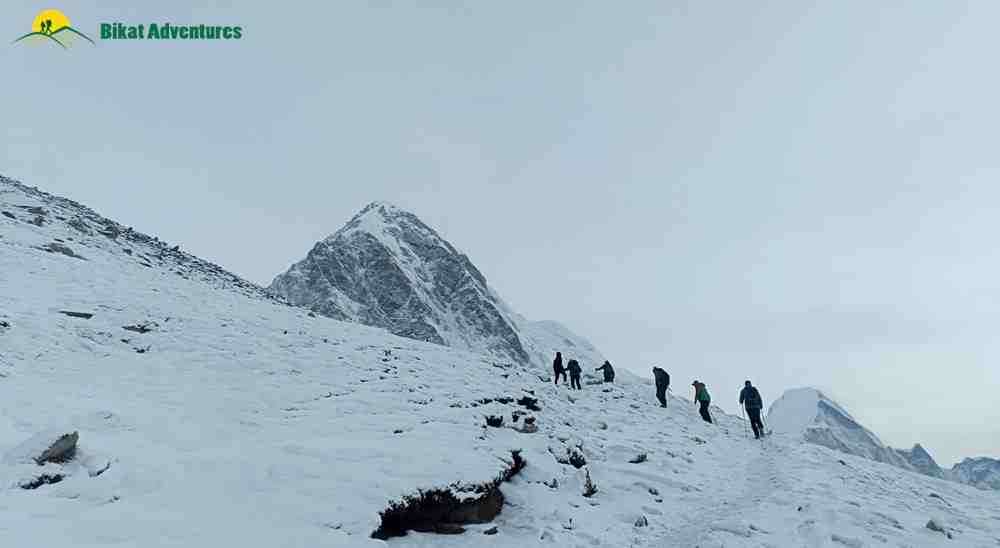
Recommended Months and Considerations:
- October to November: Considered the best time for the Everest Base Camp Trek due to stable weather, clear views, and comfortable temperatures. However, expect crowded trails and higher prices.
- March to May: Offers warmer temperatures, blooming rhododendrons, and quieter tracks compared to the peak season. It is ideal for those seeking a balance between good weather and fewer crowds.
- December to February: Colder temperatures and occasional snowfall make trekking more challenging. It is still possible for experienced trekkers seeking a quieter experience.
Conclusion: Everest Base Camp Trek
Critical Takeaways for Preparation:
- Prioritise physical fitness and gradual altitude acclimatization.
- Pack essentials, including proper clothing, gear, and a well-equipped first aid kit.
- Understand altitude sickness symptoms, prevention, and management strategies.
- Respect local culture, practice environmental responsibility, and prioritize health and safety.
The Trek demands preparation, respect for local culture, and a deep sense of responsibility toward the environment. Embrace this transformative journey with physical readiness, acclimatization awareness, and a well-equipped mindset. Beyond the physical feat lies an adventure rich in cultural immersion and personal growth. Conquer not only the mountain but also the challenges within. Your steps toward Everest Base Camp will be a testament to resilience, rewarding you with awe-inspiring vistas and an unforgettable sense of accomplishment. Embark on this extraordinary journey, savor each moment, and treasure the experience that awaits amidst the majestic Himalayas. If you’d like a guide to exploring a trek in the shadows of Mt Everest, try out Rainbow Valley. It’s beautiful and provides stunning views of the peak.
Additional Resources: Bikat Adventures’ Everest Base Camp Trek
For an immersive and expertly guided Everest Base Camp trekking experience, explore Bikat Adventures’ meticulously planned expeditions. Their services include:
- Guided Expeditions: Bikat Adventures offers curated trekking experiences to Everest Base Camp, blending expert guidance with safety and personalized itineraries.
- Experienced Guides: Benefit from experienced and knowledgeable guides who enrich the journey amidst the Himalayan grandeur.
Embark on an unforgettable journey to the Everest Base Camp trek with Bikat Adventures. Explore more about their trekking services here for an unparalleled adventure amidst the majestic Himalayas. And no matter where you run off to, always remember to Travel Till You Drop!
